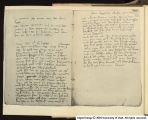| OCR Text |
Show -- 4 PAPERMAKIN "The use of wood as a material from which to make paper wa suggested by René Antoine Ferchault de Réaumur (1683-1757 celebrated naturalist and phy st residing in France. Réaumu had observed the habits of the =y and concluded that the woo material which was used by thesei ccts to construc their nests tha 50 much resembled paper,could ot actual proces of papermaking. Réaumur's observations regarding the habits o the wasp were laid before the FrenchRoyal Au(lunv in a treatis dated November 15, 1719, Réaumur wro American wasp form very fine paper, like ours; they extract .lu fibres of commo wood of the countries where they live. They teach us that pape can be made from the fibres of plmn without the use of rags an linen, and scem to invite us to try whether we cannot make fin and good paper from the use ofccrum woods. If we had wood similar to those used by the Amer wasps for their paper, w could make the whitest paper, for thi materi further beating and breaking of the l'brcs which the wasps mak and using the thin paste which comes from them, a very fine pape Chis study should not be neglected, for it is, daresay, important. The rags from which we make our paper ar not an cconomical material and every papermaker knows that thi substance is becoming rare. While the consumption of paper in y, the production of linen remains about the same B foreign mills draw upon us for material The wasp scems to teach us a means of overcoming these difficulRéaumur further continued his observations regardin heavier wasp-made paper: "But all of the wasps of the Kingdo that T know make nothing as singular as a species of wasp tha lives in Canada . . . Ac first g[«mcc, and even affer exam ng th S ot vl accept the ne h work of the hand of man. Tts covering resembles our paper to suc an extent that it is hard to detect a différence. It has the same glos al Imag © 2004 University of Utah. Al rights reserved |



































































































































































































































































































































































































